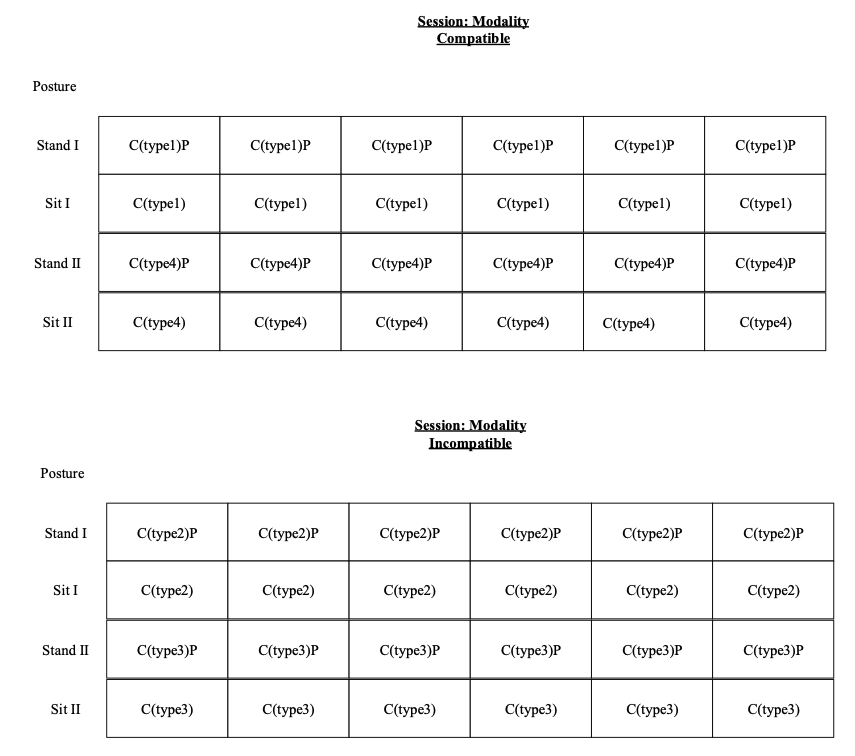This effects of physical and mental fatigue on cognitive-motor dual task ability research paper covers a popular topic many students choose when they address us with a ‘write my essay’ request’. If you also write your paper on this topic, the following will be a great example for you.
Materials and Methods
Participants
The participants of the study were community-dwelling individuals, who were able to walk a minimum of 10 meters without any kind of manual assistance and were medically stable with no hearing or vision impairments or fall-related incidents during the 12 months before the study. The walking test consisted of normal walking (also referred to as single-task walking) and walking while performing a specific cognitive task (also referred to as dual-task walking). However, exclusion criteria consisted of individuals with neurological conditions or considerable cognitive impairments, individuals taking any drugs or medications, individuals with some serious illnesses or injuries that could hinder their appropriate participation in the study, and individuals who would not be able to pass strength training or endurance training programs. Participants were screened and enrolled by a rehabilitation expert.
This study was approved by the ethical review committee of the institution. A written informed consent was obtained from all study participants before data collection. The research was conducted according to the Declaration of Helsinki.
Study Design
The study consisted of four sessions, including a physical fatigue (PF) session, a physical control (PC) session, a mental fatigue (MF) session, and a mental control (MC) session. The sessions consisted of four runs with two standing conditions alternating with two sitting conditions. The task conditions are presented in Table 1. Each run consisted of six blocks, as shown in Figure 1.
Table 1
Task Conditions
| Conditions | Cognitive task |
| Sit | Cognitive single task (C) |
| Stand | Cognitive-Postural dual task (CP) |
Figure 1
Task Design

Note: The study design consisted of four runs with two standing conditions alternating with two sitting conditions. Each run in the standing condition consisted of a cognitive-postural dual task with four different types of cognitive tasks, and each run in the sitting condition consisted of cognitive tasks of four different types, as demonstrated below. CP is an abbreviation for cognitive postural dual task, and C is an abbreviation for cognitive task. Modality compatible shows tone – response (type 4) or square – button press (type 1), and modality incompatible shows tone – button press (type 3) or square – response (type 2)
Measurements
Demographic information was obtained during the general preparation. The body height, foot length, and dominant leg were determined. In order to determine the dominant leg, the participants were asked to kick a ball softly. They were also asked, “Which leg would you use to put out a cigarette?” The kicking leg and the leg that was mentioned in the answer to the question was considered the dominant leg.
Experimental Tasks
Physical Fatigue Protocol
The physical fatigue protocol included squats utilizing slalom bars/hurdle at an appropriate depth. The depth for squats was set by asking the participants to perform a few squats without any resistance in a hip-width stance, and slalom bars/hurdle were placed behind the subject so that the back thighs were slightly touching the crossbar, and height of the squat bar was measured. The placement of the feet was marked, and the positions of the heel and toes were set, so that the same stance could be taken again later. Initially, the individuals were asked to perform 10 to 20 test repetitions at low speed to get used to the physical fatigue protocol.
The Borg Rating of Perceived Exertion (RPE) was used to assess the level of exertion during the fatigue task. The RPE scale has different scores ranging from 6 to 20, representing different levels of exertion. For instance, the score of 6 shows no exhaustion at all and the score of 20 shows maximum effort. The score of 9 corresponds to “Very light” effort, 13 shows “somewhat hard”, 14 and 15 show “Hard (heavy)”, 16 and 17 show “Very hard”, and 19 corresponds to “Extremely hard” (Borg, 1982; Williams, 2017). In the physical fatigue protocol, the participants were asked to continue with the exercise even when it became strenuous, as it was extremely important for the research that participants exerted themselves to the maximum. Nevertheless, they were asked to achieve an RPE value of 16 or higher, showing complete exhaustion.
Along with the RPE value, the Rating of Fatigue scale (ROF) was used to assess the level of perception of fatigue or exhaustion of participants. The ROF scale consisted of 11 numerical items ranging from 0 to 10. In these numbers, the score of 0 demonstrates no feeling of exhaustion at all, and the score of 10 shows complete exhaustion and tiredness (Micklewright et al., 2017).
Cognitive Task
The cognitive task for mental fatigue was performed utilizing 1-back tasks, which is a form of n-back task used for the assessment of working memory (Gajewski et al., 2018). In the 1-back task, the participants were asked to recognize whether a stimulus presented to them was identical to the stimulus presented immediately before. If they thought this was the case, they had to confirm this with a quick response. There were four different task types in total. In the first type, they would see a square and must confirm with a button press if the square appeared in the same place as immediately before. In type 2, they had to speak the word “Yes” clearly into the microphone when the square appeared in the same place as immediately before. In Type 3, they would hear one of three tones in either their left or right ear and must press the correct one when they would hear the same tone in the same ear as immediately before. And in Type 4, they had to clearly say “Yes” when they heard the same sound in the same ear as immediately before.
Cognitive-Postural Dual Task
The participants were asked to perform the tasks individually or simultaneously in either a single-leg stand or a seated position with apparently no postural demands. In single-leg stand, the participants were asked to let their arms hang relaxed beside their bodies and raise one of their legs by bending their hips to 90 degrees. They were asked to avoid touching or leaning on their standing legs. They were asked to remain standing on one leg during the tasks while looking at the screen. In addition, the participants had to stand as still as possible and had to make no jerky movements until the second beep sounded. If the answer was correct, they were asked to press the button very lightly with their thumbs. If they lose their balance, they would repeat the passage. It was very important that they had not to prioritize any of the tasks, i.e., they had to try to solve both the balance task and the memory task as well as possible.
Procedure
Session PF
This session consisted of the results obtained in the pre-test and post-test states. The RPE and ROF values of the participants were recorded in the pre-test state. The participants were equipped with headsets and clickers, and were allowed to practice the tasks.
In this case, the post-test was achieved after exposing the participants to physical fatigue tasks, including squats on the Flywheel platform for an appropriate duration, as noted earlier, till complete exhaustion. The sense of exertion and exhaustion was determined before and after each run. The participants were asked to move continuously until they became fatigued. There were four runs (1 run = 6 blocks of 33s = approx. 7 minutes) and squats were performed before each run. The average of blocks was considered for each run. The tasks in the sessions were either modality compatible or incompatible. The RPE and ROF values were determined again in the post-test state.
Session PC
This session consisted of the results obtained in the pre-test and post-test states. The RPE and ROF values of the participants were recorded in the pre-test state. The participants were equipped with headsets and clickers, and were allowed to practice the tasks. In addition, the tasks were performed alternating between sitting and standing, after a brief practice of these tasks.
In this case, the post-test state was achieved after exposing the participants to physical control conditions, including watching a nature documentary on Netflix between each run (alternating between standing and sitting) for the duration that they performed the squats in the introductory session. There were four runs (1 run = 6 blocks of 33s = approx. 7 minutes) and a nature documentary was shown before these runs. The tasks in the session were either modality compatible or incompatible. The inclusion of only modality compatible tasks or only modality incompatible tasks was done to achieve better task performance. The RPE and ROF values were determined again in the post-test state.
Session MF
This session consisted of the results obtained in the pre-test and post-test states. The participants were allowed to briefly practice the cognitive tasks. In the pre-test state, the cognitive tasks were performed alternating between sitting and standing.
In this case, the post-test was achieved after exposing the participants to a mental fatigue protocol, including a double task (tone – button press or square – response), that was performed in front of the laptop for 60 minutes. The tasks in the session were either modality compatible or incompatible. The RPE and ROF values were determined again in the post-test state.
Session MC
This session consisted of the results obtained in the pre-test and post-test states. The RPE and ROF values of the participants were recorded in the pre-test state. In addition, the cognitive tasks were performed alternating between sitting and standing, after a brief practice of these tasks.
In this case, the post-test state was achieved after exposing the participants to mental control conditions, including watching a nature documentary on Netflix for 50 to 60 minutes. The participants were shown the episodes that had not previously been shown. The tasks in the session were either modality compatible or incompatible. The RPE and ROF values were determined again in the post-test state.
Statistical Analysis
The performance data associated with cognitive tasks were computed utilizing the formula p(Hit)-p(False alarms). For each run, the average of blocks was taken into account. The results from the post-test of the sessions PF and MF were assessed using a paired t-test. Aside from these results, two-way repeated measures ANOVA was used with time of measurement (pre-state and post-state), sessions (including PF and PC sessions, and MF and MC sessions), and conditions (sit and stand) as within subject variables. In this case, there were two groups of sessions, including (1) session PF and session PC, and (2) session MF and session MC. These two groups were considered between subject variables. The two-way repeated measures ANOVA was helpful in determining whether any change in cognitive-motor dual task ability was the result of the interaction between the use of the conditions and time. Moreover, follow-up tests could be performed to determine in slightly more detail the effect of within-subject variables on the cognitive-motor dual task ability. In all these statistical analyses, the level of significance was lower than 0.05 (p-value < 0.05).





